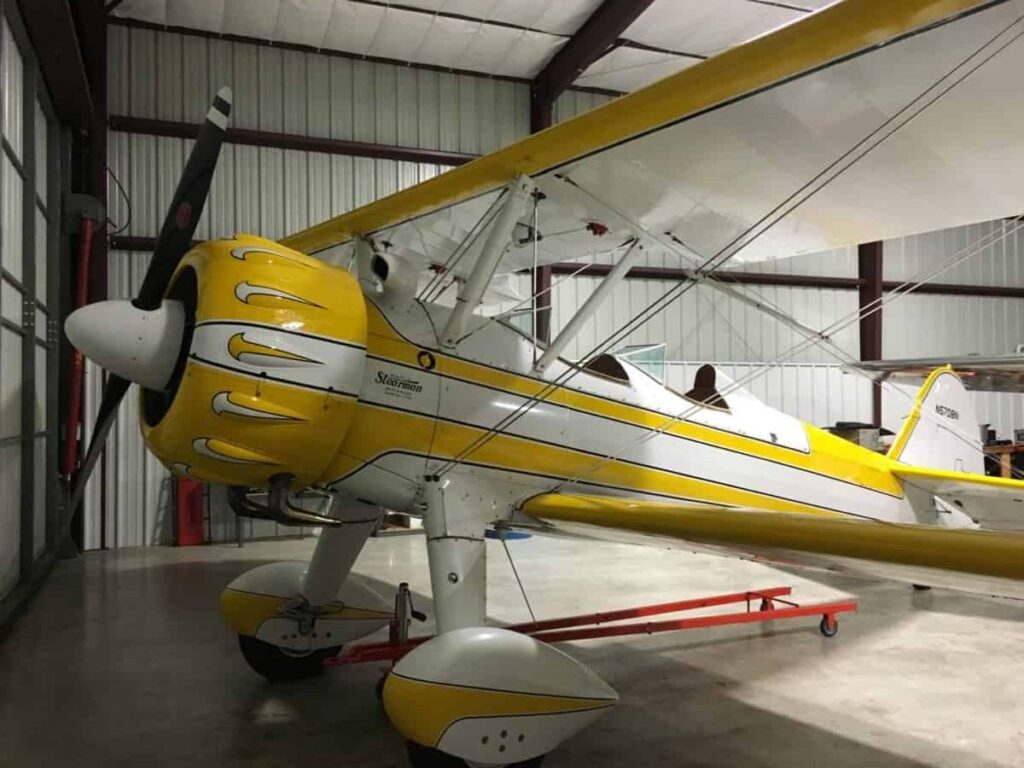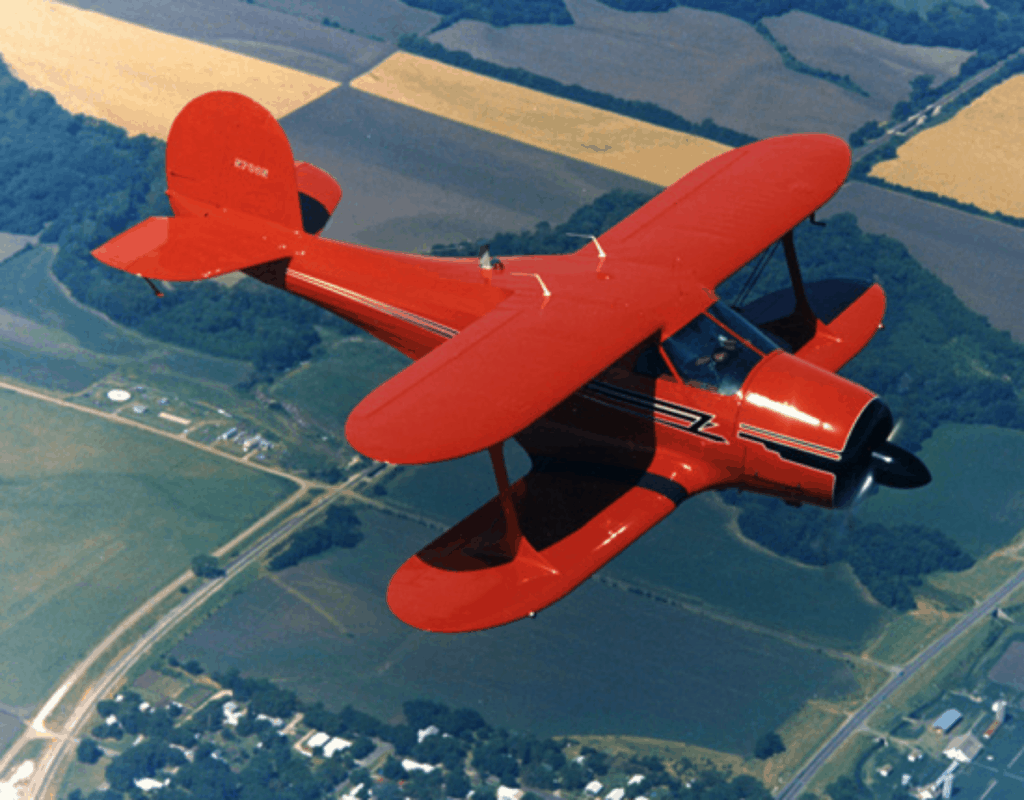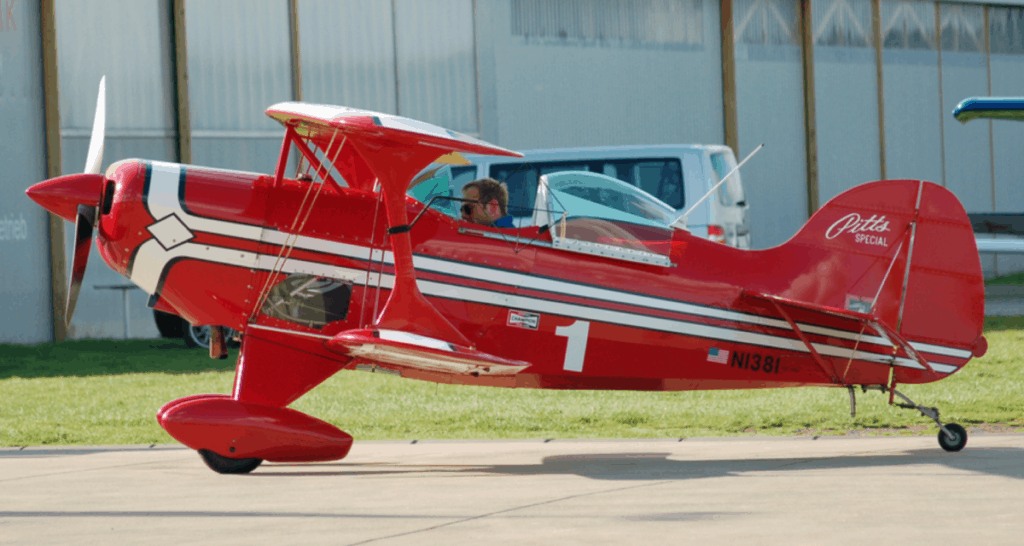
Although most aircraft are made of the same basic elements, wings, rudder, elevators, a fuselage, and a tail cone, the way these elements are created and organized on the aircraft can be a little different and can create different flying characteristics. Anyone who has seen many of the first successful aircraft will notice they had two sets of wings stacked one above the other, this design is called a biplane, and was in use for many years dominating the market.
In today’s world of aviation it is obvious that biplanes are no longer the majority and most modern aircraft seen flying are the monoplane design. This design is one wing, typically placed above or below the fuselage.
So other than the obvious look, what are the differences between biplanes and monoplanes?
Biplanes were the original aircraft design in aviation to provide a lightweight yet sturdy structure. Newer materials and designs are much stronger and can be built with one wing. Biplanes are commonly used for nostalgic purposes and tend to fly slower but sometimes more stable than monoplanes.
The Wright Flyer that took flight in 1903 and started the timeline of powered flight was in fact a biplane. The biplane allowed a very stiff structure to be created without adding a lot of weight into the overall design of the aircraft.
Bracing structure was added between the wings and allowed the wings themselves to be made out of thinner material which allowed the overall structure to be lighter but stronger than the monoplane designs of the era.

Source: Wikipedia Commons
Having two wings stacked on top of each other also meant that the wings have twice the area so this allowed for the span to be shorter. This added to the stiffness of the biplane wing design.
Engines during the biplane era were much less powerful than today’s power-plants so weight was even more of a factor. The lack of power also meant aircraft did not travel as fast, this lack of power meant the extra drag that the biplanes produced did not negatively impact the flight characteristics as much as a heavier, weaker wing would have.
Aerodynamics
No matter what you are flying, a biplane or a monoplane, the overall physics work the same around an airfoil. That is as air moves over the top of an airfoil it speeds up and creates an area of low pressure above the wing and lift occurs.
The main difference between the two configurations is that a biplane has two wings stacked on top of each other so the air from the bottom of the top wing and the air from the top of the bottom wing interfere and create a disturbance that actually hurts the aerodynamics of the aircraft.
Biplanes also typically have struts between the wings to create a stiff wing design. These structures, similar to a high wing monoplane with struts, create drag and can slow the airplane down.
Between having struts and having two wings, biplanes have a large increase in profile and interference drag compared to the monoplane.
Also unique to biplane design is the ability to position one wing further in front than the other wing. Depending on the purpose of the aircraft, designers can stagger the wings to get different performance out of the airplane (such as the famous Beechcraft Model 17 Staggerwing, pictured below).
With a monoplane you only have one wing to adjust placement and one chance to alter the angle of incidence to modify flight characteristics.

Source: Wikipedia Commons
Roll Characteristics
Although this depends on the overall design purpose of the aircraft, biplanes are known to be designed with two or four ailerons. Biplanes in turn have a faster roll rate than your average monoplane and depending on configuration can have lighter control forces to produce those impressive roll rates.
However, this is not always true, for example an Extra 300 has a slightly faster roll rate than a Pitts, but that same Pitts has about twice the roll rate as a Super Decathlon (pictured below).
Biplanes also tend to have greater maneuverability compared to a monoplane and can have lighter control forces.


Source: Wikipedia Commons

Source: Wikipedia Commons
Cruise Characteristics
Compared to monoplanes, biplanes have a relatively slow cruise speed, which is typically result of the extra drag that biplanes have.
In order to increase the cruise speed a larger engine is needed and then the fuel burn will surpass most monoplanes built for a similar mission.
Other than the drag and speed differences the biplane does not have any reason to be different to control than the monoplane. However, if you were trying to choose an airplane to buy for a primary cross country flyer, a monoplane would probably be your better answer.
Takeoffs and Landings
Biplanes are able to create sufficient lift at very low airspeeds so the takeoff roll is typically shorter than the common trainer monoplanes. However many of the STOL monoplane aircraft, commonly seen in the bush flying community, are able to perform much better than biplanes.
The same concept is true for landing. A biplane’s ability to fly slowly allows for a slow approach and that means the aircraft has to dissipate less energy to reach a full stop.
Visibility
The visibility of a biplane can be quite different depending on a few factors. A lot of biplanes are tailwheels and taxiing can be much more difficult than a typical tricycle monoplane. Some biplane tailwheel aircraft taxi using a series of s-turns so that the pilot can see what lies ahead.
During landing it is possible for forward visibility to be so bad that a slip is used to keep the runway in sight. The Boeing Stearman (pictured below) is a good example of this phenomenon. Either a slip, steep final approach course, or curved final approach must be used in order to maintain forward visibility prior to landing.

Source: Wikipedia Commons
Most biplanes are either open canopies or bubble canopies, which typically increase the visibility above your aircraft compared to a high wing airplane. However the lower wing of a biplane is typically below the fuselage and can limit the visibility below your aircraft, similar to a monoplane low wing aircraft.
While looking out of the front of a biplane during flight there is not a lot of differences. Sometimes the struts that tie the two wings together can limit the view out of the side, but, as a bonus, can also be used as references to the horizon during aerobatic maneuvers.
Also, many biplanes are tandem seating (one in front of the other) and this, depending on where you are sitting, can impact your visibility throughout any phase of flight.
Maintenance
Maintaining a biplane takes a little more work than a monoplane but does not pose a significant impact. Things to consider are that many biplanes are used for aerobatics and are used in an environment that can result in higher loading to the structure. This means that inspection to all wing structure is crucial and you have twice the number of wings and attachments to check.
Cleaning can also become more tedious with a biplane because you have more surfaces to have potential build up on.
The struts that tie the two wings together can also be an area that requires a little more time to wash. These struts also increase the amount of exposed materials for potential corrosion.
Depending on the configuration it is possible that you could have twice the amount of ailerons and with an increase in control surfaces you have increased the amount of moving parts and inspection areas.
Operational Differences
Biplanes are much less common today than they were at the beginning of powered flight but are still widely used in the aerobatic training and airshow industry. Most biplanes are purpose built to be high performance type aircraft so typically they are not used much in the primary training of pilots.
Biplanes have good flight characteristics; takeoff distances, low stall speeds, and are stable, which makes them ideal in the airshow world. Not to mention they truly stand out visually in a crowd of other airplanes.
In Conclusion
The biplane has many performance advantages but lacks the streamline, low drag that a monoplane has to offer.
The biplane ruled the skies in the early days of aviation because a stiff wing could be built with lighter material and maneuverability was not sacrificed. The low power of the original aircraft engines also made the biplane a winner because of its ability to create lift more efficiently at those lower speeds.
As technology has advanced we are now able to build a monoplane with stiffer wings and make them just as light. Also modern power plants allow us to get even better performance out of the monoplane.
In the end, to decide which aircraft will fit your need best, you must look at your particular flying mission and which characteristics you want out of your airplane.
If you are looking for a fast low drag cross country machine or a primary flight trainer a monoplane will probably fit you best. If you are looking for more of a nostalgic aircraft that is capable of withstanding high ‘g’ loading and can turn the world upside down a biplane just might be the appropriate fit for you.



